Discover 20 hidden attractions, cool sights, and unusual things to do in Göttingen (Germany). Don't miss out on these must-see attractions: Alter Botanischer Garten, Gänseliesel, and Stadtfriedhof. Also, be sure to include SS. Peter and Paul's Church in your itinerary.
Below, you can find the list of the most amazing places you should visit in Göttingen (Lower Saxony).
Table of Contents
Alter Botanischer Garten
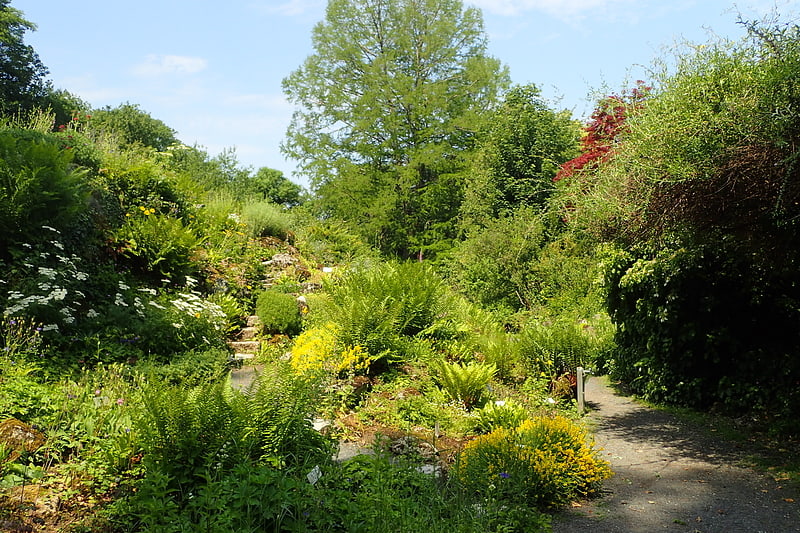
Botanical garden in Göttingen, Germany. The Old Botanical Garden of Göttingen University, with an area of 4.5 hectares, is an historic botanical garden maintained by the University of Göttingen. It is located in the Altstadt at Untere Karspüle 1, adjacent to the city wall, Göttingen, Lower Saxony, Germany, and open daily.
The garden was established in 1736 by Albrecht von Haller (1708–1777) as a hortus medicus, and gradually extended via adjacent plots within and without the city wall. By 1806 the garden had a tropical greenhouse, orangery, and cycad house; to these were added in 1830 an Araceae greenhouse, and again in 1857 a new orangery (converted in 1910 to a fern house). Although the garden's collection of tropical plants was destroyed in the World War II, it was replenished postwar and augmented by a major collection of wild plants from central Europe. In 1967, as the university's natural science faculty began its relocation to a site north of the city center, two new botanical gardens were there established (the Neuer Botanischer Garten der Universität Göttingen and the Forstbotanischer Garten und Arboretum), but the old garden continues. In one of the most recent changes, its systematic garden was converted in 2003–2007 from a century-old taxonomic structure to one reflecting contemporary molecular genetics.
Today the garden contains 17,500 accessions representing about 14,000 species, and it forms one of the largest and most significant scientific collections of plants in Germany. It contains major collections of bromeliads (about 1,500 species and varieties, including 500 species of Tillandsia alone), cacti (approximately 1,500 species), ferns (about 550 species, including some of the rarest ferns of Central Europe), marsh and aquatic plants (ca. 300 species), and mosses (100 species). Its major areas include a systemic garden (1,200 species), arboretum, pond, rockery, useful and medicinal plant garden, and a weed collection. Eight greenhouses contain bromeliads, orchids, carnivorous plants, plants of the tropical rain forest, tropical water plants, cycads, aroids, cacti and other succulent plants, and ferns. Three tunnels through the city wall link the garden's inner and outer sections.[1]
Address: Untere Karspuele 2, 37073 Goettingen (Innenstadt)
Gänseliesel
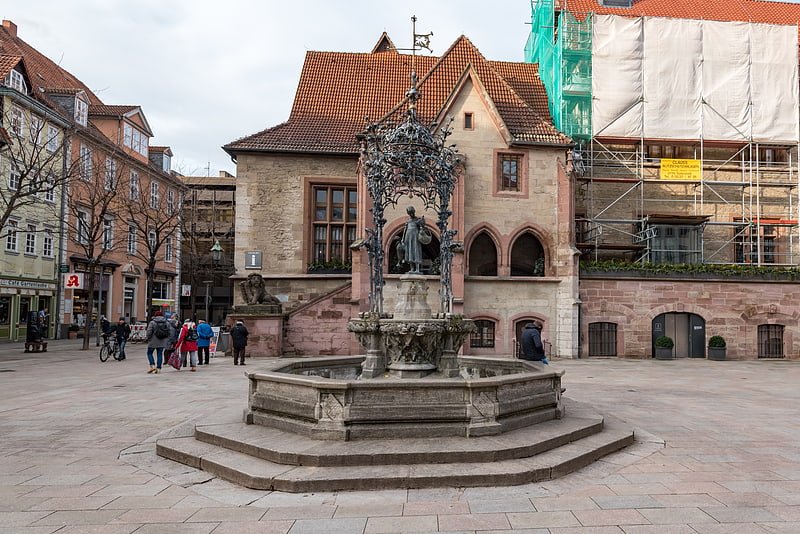
Historical landmark in Göttingen, Germany. The Gänseliesel is a fountain which was erected in 1901 in front of the mediaeval town hall of Göttingen, Germany. Although rather small in size, the fountain is the best-known landmark of the city. Today, it is an essential part of graduation celebrations, for every student who finishes a doctorate at the University of Göttingen has to climb the fountain and kiss the statue of the goose girl.
A Gänseliesel is also situated in Monheim am Rhein, Hanover's Steintor Square and Berlin's Nikolsburger Square.[2]
Stadtfriedhof

Cemetery in Göttingen, Germany. The old Stadtfriedhof in Göttingen is a historic cemetery with graves of important scholars. It is the final resting place of no less than eight Nobel Prize winners: Max Born, Otto Hahn, Max von Laue, Walther Nernst, Max Planck, Otto Wallach, Adolf Windaus and Richard Zsigmondy.[3]
Address: Kasseler Landstraße, Göttingen (Weststadt)
SS. Peter and Paul's Church
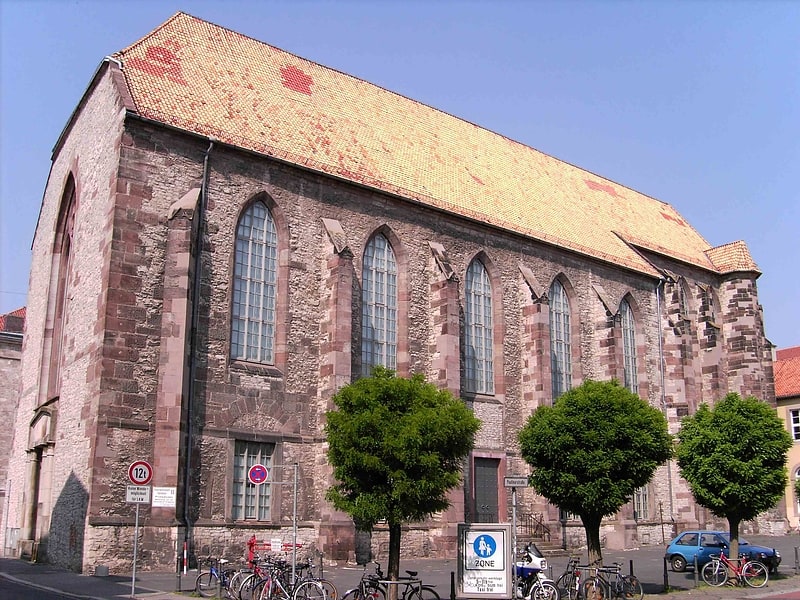
Also known as: Paulinerkirche
The Paulinerkirche in the historic city center of Göttingen was completed as a minster in 1304. Today it serves as a convention and exposition centre for the Göttingen State and University Library.[4]
Address: Papendiek 14, 37073 Goettingen (Innenstadt)
Historische Sternwarte
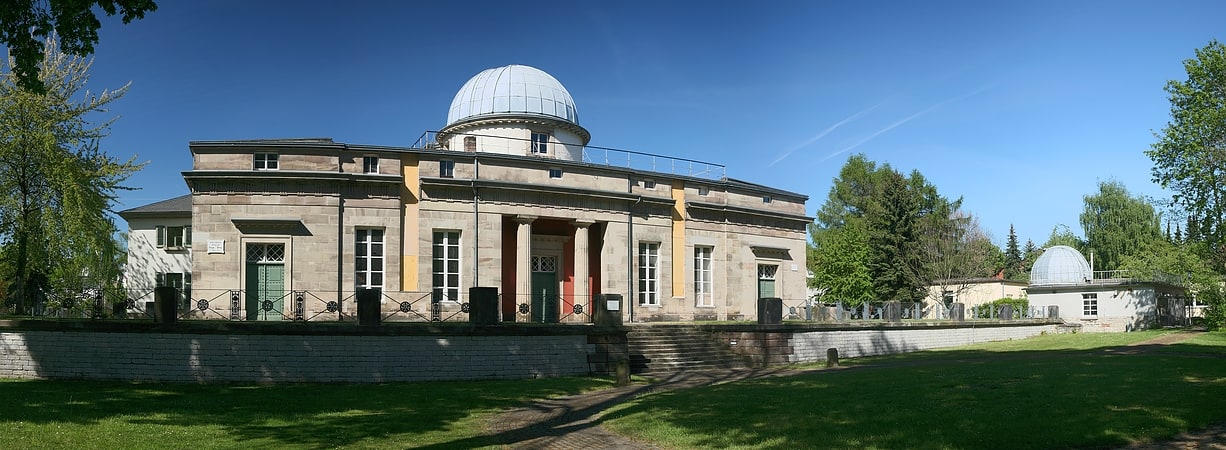
Also known as: Sternwarte Göttingen
Astronomical observatory. Göttingen Observatory is a German astronomical observatory located in Göttingen, Lower Saxony, Germany.[5]
Address: Geismar Landstraße 12, Göttingen (Oststadt)
Albanifriedhof
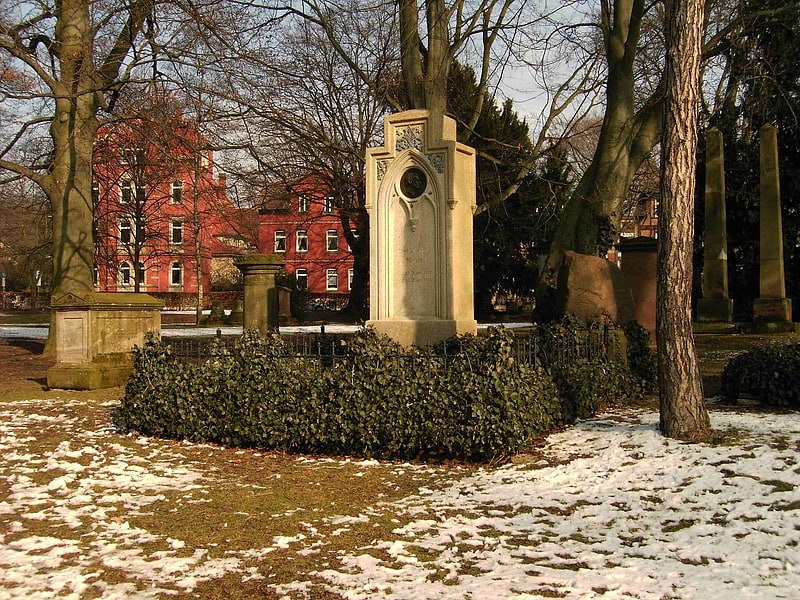
Also known as: Albani-Friedhof
Cemetery in Göttingen, Germany. Albanifriedhof is a cemetery in Göttingen, Germany just outside the city wall to the southeast. It is most famous as the final resting place of Carl Friedrich Gauss.The cemetery is named after St. Albani Evangelical Lutheran Church in Göttingen.[6]
Address: Albanikirchhof 1a, Göttingen (Innenstadt)
Mackenröder Spitze
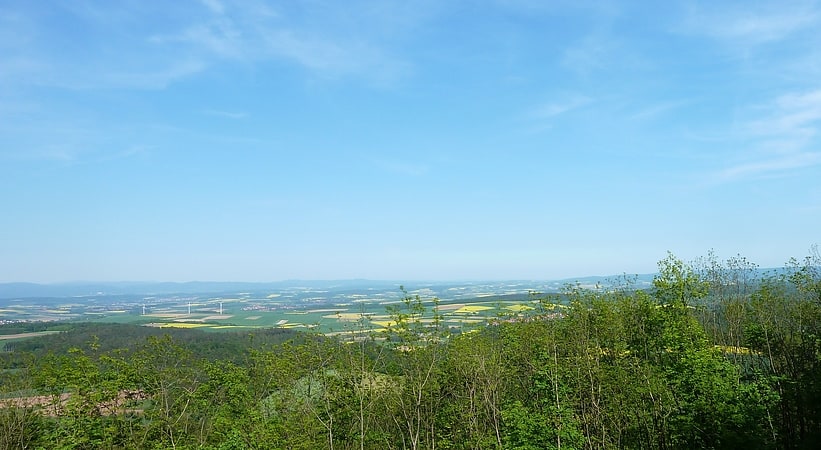
Hill in Germany. The Mackenröder Spitze, at about 427.5 m above sea level, is the highest hill in the Göttingen Forest and lies on the boundary of the town and district of Göttingen, in South Lower Saxony in Germany.[7]
Sankt Martini
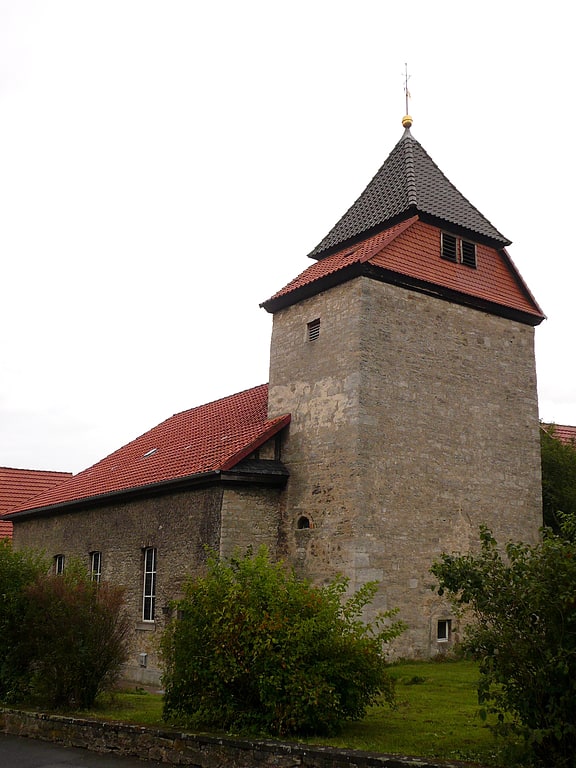
Also known as: St.-Martini-Kirche
St. Martin's is a Lutheran church in Groß Ellershausen, Göttingen, Lower Saxony, Germany. It is significant as possibly retaining the oldest existing structure, its tower, in southern Lower Saxony. While the details of the origin of the church building have been lost in the mist of history, architectural analysis indicates that the Romanesque church tower was most likely built in the tenth or eleventh century. The remains of a hearth on the second floor have led to the conclusion that the tower was originally a Wohnturm of a titled family, probably the Herren von Ellershausen, which lived there at the time. The church's ship is much younger, probably having been built or re-built during the Barocque era. It was repaired in 1838..
Records from 1608 and 1610 indicate there were two bells in the church. The larger of the two was melted down during the First World War as part of the national effort to obtain metals for military purposes. In 1922, two steel bells were dedicated as replacements. Then in 2003 three new bronze bells of unequal sizes were installed. Each of the bells has a Latin word inscribed (Soli, Deo and Gloria, meaning "only to God the honor"). The bells are rung by an electrically run system, with various combinations and sequences signifying various things.
It currently houses a Lutheran congregation.[8]
Address: 23 St.-Martini-Straße, Göttingen
Forestry Botanical Garden and Arboretum

Botanical garden in Göttingen, Germany. The Forstbotanischer Garten und Pflanzengeographisches Arboretum der Universität Göttingen, often called the Forstbotanischer Garten und Arboretum, is a 40 hectares arboretum and botanical garden maintained by the University of Göttingen. It is located at Büsgenweg 2, Göttingen, Lower Saxony, Germany, immediately adjacent to the New Botanical Garden, and open to the public daily.
The arboretum dates to 1870 when it was created as a forestry school by the Hannoversch Münden Faculty of Forestry. Over the years it fell into disuse but was revived and substantially modified in 1970/71 when the forestry education and research facilities were transferred to Göttingen. At that time today's garden and arboretum were begun, with first plantings taking place in Autumn 1970 in the Japan section. Early plantings focused on wild species but after 1980 cultivated varieties were increasingly planted.
Today the garden and arboretum contain over 2000 species on the forestry school campus. Its major sections garden are as follows: geographic collections of trees from China, Japan, Korea, North America, and the Caucasus, which together represent about 45 genera with 800 species, subspecies, and varieties; the forest botanical garden (7 hectares) which contains about 140 plant genera with about 1100 wild species, subspecies, and varieties; and a tertiary forest area.[9]
Theater im OP
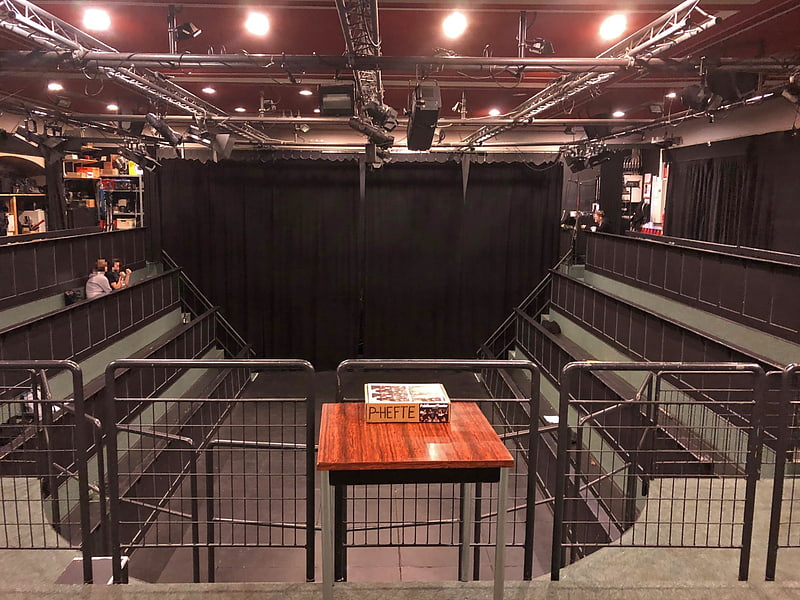
Theater in Göttingen, Germany. The Theater im OP, abbreviated ThOP, is a community theater on the former premises of the Georg-August-Universität medical center. The stage is situated in the former anatomical theater. The theater's name refers to this, OP standing for German: Operationssaal, lit. 'operating hall'.[10]
Address: Göttingen, 3 Käte-Hamburger-Weg
Niedersächsische Staats- und Universitätsbibliothek Göttingen
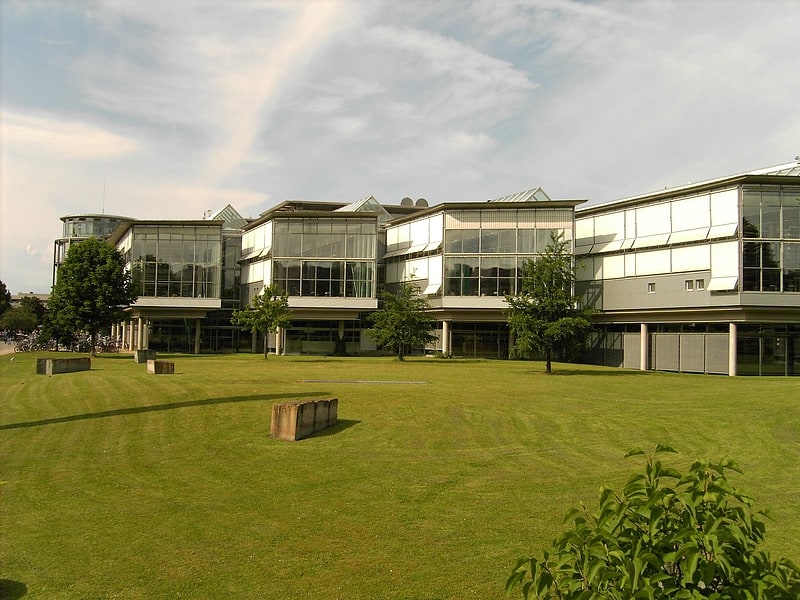
University library in Göttingen, Germany. The Göttingen State and University Library is the library for Göttingen University as well as for the Göttingen Academy of Sciences and is the state library for the German State of Lower Saxony. One of the largest German academic libraries, it has numerous national as well as international projects in librarianship and in the provision of research infrastructure services. In the year 2002, the SUB Göttingen won the German Library of the Year award. Its current director is Wolfram Horstmann.
The library works under a dispersed system, with six branch libraries located in various academic departments, supplementing the central collection housed in the Central Library (construction completed in 1992) on the main campus and the Historical Library Building in downtown. The Historical Building holds manuscripts, rare books, maps, and a significant history-of-science collection and works in its special collections. In addition, its original core, the SS. Peter and Paul's Church, Göttingen, has been made into an exhibition and lecture center through adaptive reuse and reconstruction.
As of December 2016, the SUB Göttingen holds some 8 million media units, among which are 5.9 million volumes, 1.6 million microforms, 50,000 licensed electronic journals as well as 126,000 further digital media, 327,000 maps and more than 14,000 manuscripts, 3,100 incunabula and 400 Nachlässe (literary remains). It possesses a Gutenberg Bible (one of only four perfect vellum copies known to exist).
The SUB Göttingen has maintained the Göttingen Center for Retrospective Digitization (GDZ) since 1997. It also operates the Göttingen University Press, which has been expanding since its foundation in 2003 and is committed to the Open access principle. Since its establishment in 2004, the library's Department for Research and Development has been instrumental in the development of new services such as the establishment of virtual research environments and infrastructures for scientific data and services.
Within the framework of the Collection of German Prints, the SUB Göttingen collects publications of the 18th century. Within the Specialised Information Services Programme funded by the German Research Foundation (DFG), it operates the specialised information services Mathematics (since 2015, with the German National Library of Science and Technology (TIB Hannover)), Anglo-American Culture (since 2016, with the Library of the J. F. Kennedy Institute of the Free University of Berlin), Geosciences of the Solid Earth (since 2016, with the German Research Centre for Geosciences (GFZ Potsdam)) and Finno-Ugric / Uralic Languages, Literature and Culture (since 2017). In cooperation with the University Library "Georgius Agricola" of the Technische Universität Bergakademie Freiberg (UBF), the SUB Göttingen maintains a large online collection of geoscience-related materials, the GEO-Library Experts Online, or GEO-LEO.
The SUB Göttingen coordinates the establishment of a nationwide competence center for the licensing of electronic resources (together with the Berlin State Library and the Head Office of the Common Library Network (GBV). Since 2014, it has operated the Göttingen eResearch Alliance (together with the University Computing Centre (GWDG). The library coordinates the DARIAH-DE project for the development of research infrastructures in Germany, and supports the consortial establishment of open access research infrastructures (OpenAIRE 2020, COAR) across Europe and worldwide.[11]
Address: Platz der Göttinger Sieben 1, Göttingen (Nordstadt)
Old Town Hall
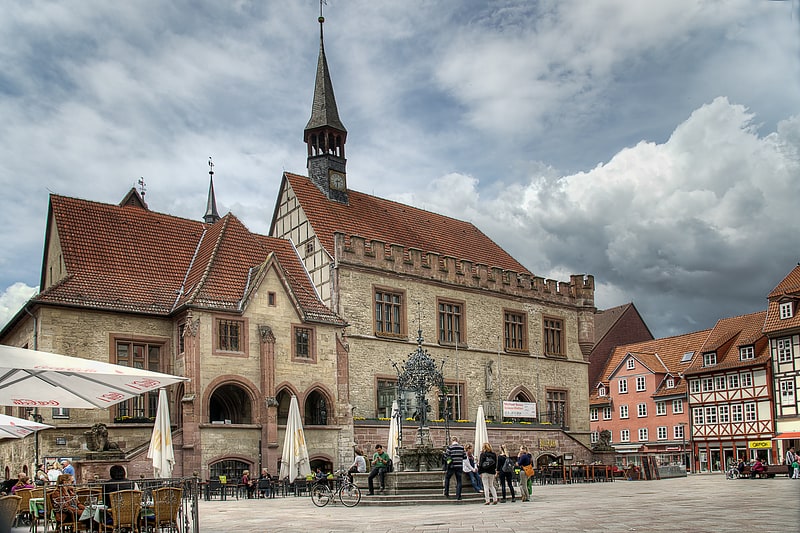
The Old Town Hall in Göttingen was built in several stages starting in 1270 and was the seat of the council and administration of the city of Göttingen until 1978. It stands on the west side of the market square in the middle of the old town. Today it serves representative purposes, for events and exhibitions.
Address: 9 Markt, Göttingen (Innenstadt)
Sammlung für Völkerkunde
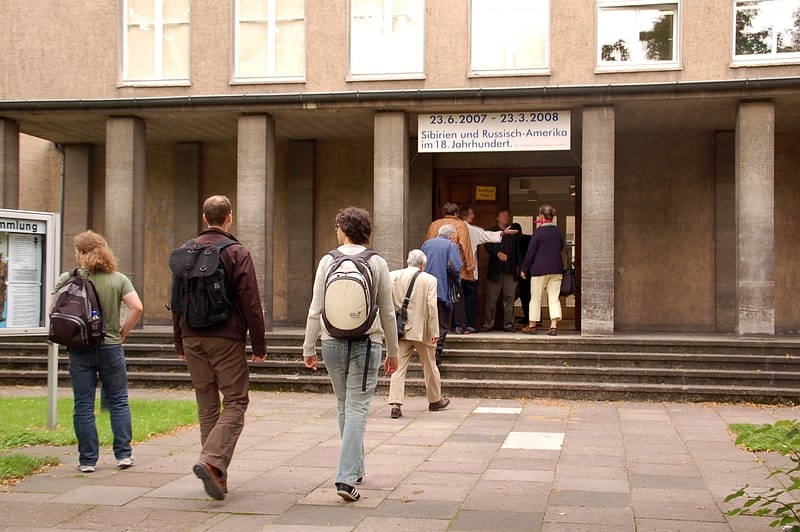
Also known as: Ethnologische Sammlung der Universität Göttingen
Cultural institute in Göttingen, Germany. The Sammlung für Völkerkunde at the Institute of Cultural and Social Anthropology of the University of Göttingen is one of Germany's most important ethnological collections. The museum was founded around 1780 and revived around 1930, and is now funded by the state of Lower Saxony.
The collection consists of approximately 17,000 items and focuses on the South Pacific with the Cook-Forster collection, containing items from Hawaii, Tahiti, Tonga, and New Zealand, and on Siberia and the polar regions with the Baron von Asch collection.[12]
University of Göttingen

Also known as: Georg-August-Universität Göttingen
Public university in Göttingen, Germany. The University of Göttingen, officially the Georg August University of Göttingen, is a public research university in the city of Göttingen, Germany. Founded in 1734 by George II, King of Great Britain and Elector of Hanover, and starting classes in 1737, the Georgia Augusta was conceived to promote the ideals of the Enlightenment. It is the oldest university in the state of Lower Saxony and the largest in student enrollment, which stands at around 31,600.
Home to many noted figures, it represents one of Germany's historic and traditional institutions. As of October 2021, 45 Nobel Prize winners have been affiliated with the University of Göttingen as alumni, faculty members or researchers.
The University of Göttingen was previously supported by the German Universities Excellence Initiative, holds memberships to the U15 Group of major German research universities and to the Coimbra Group of major European research universities. Furthermore, the university maintains strong connections with major research institutes based in Göttingen, such as those of the Max Planck Society and the Leibniz Association. With approximately 9 million media units, the Göttingen State and University Library ranks among the largest libraries in Germany.[13]
Bismarck Cottage
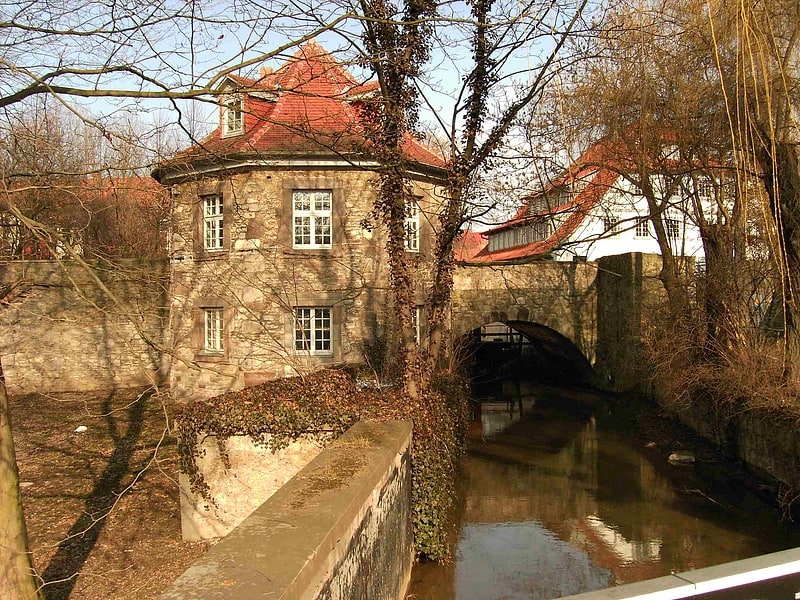
Address: 27a Bürgerstraße, Göttingen (Innenstadt)
New Botanic Garden of Göttingen University
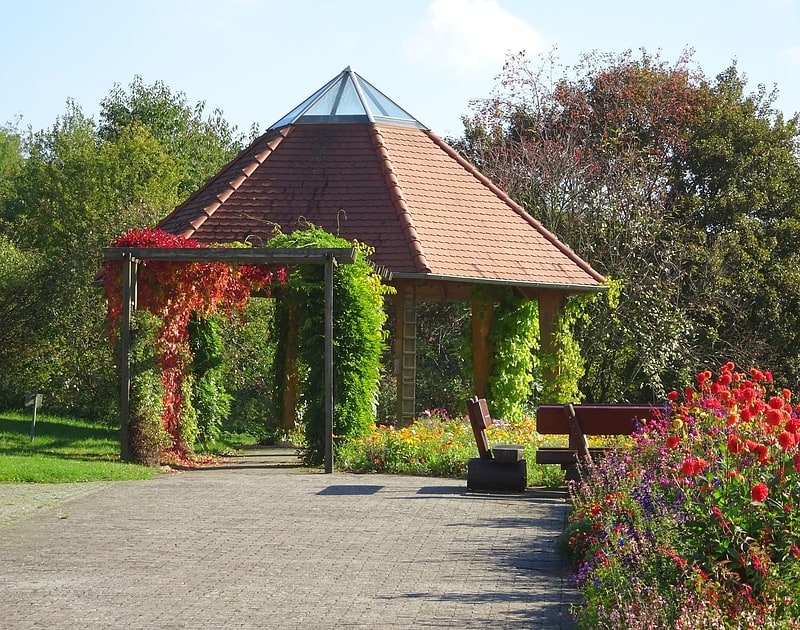
Also known as: Experimenteller Botanischer Garten
Botanical garden in Göttingen, Germany. The Neuer Botanischer Garten der Universität Göttingen, also known as the Experimenteller Botanischer Garten, is a research botanical garden maintained by the University of Göttingen. It is located immediately adjacent to the university's Forstbotanischer Garten und Arboretum at Grisebachstraße 1, Göttingen, Lower Saxony, Germany, and open daily without charge.
The garden was established by Prof. Heinz Ellenberg (1913–1997) in 1967 as an experimental facility to augment the historic Alter Botanischer Garten der Universität Göttingen. In 2009 its name was changed to the Experimenteller Botanischer Garten.
The garden contains special collections of Centaurea and related genera, native flora of Central Europe, holarctic forest vegetation, endangered wild plants, and rare weeds, as well as an alpine garden (5000 m²), wild rose collection, and pond (400 m²) with aquatic and swamp plants.[14]
City Museum
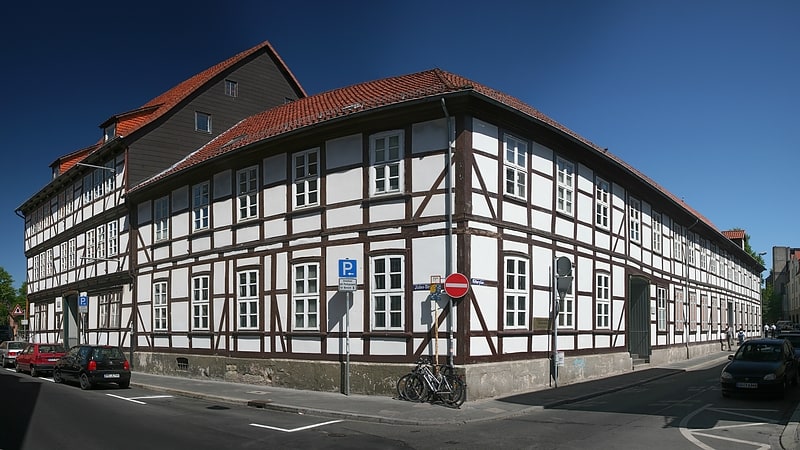
The Göttingen City Museum is a collection on the history and cultural history of the city and region of Göttingen.
Address: Ritterplan 7-8, 37073 Göttingen (Innenstadt)
Kiessee
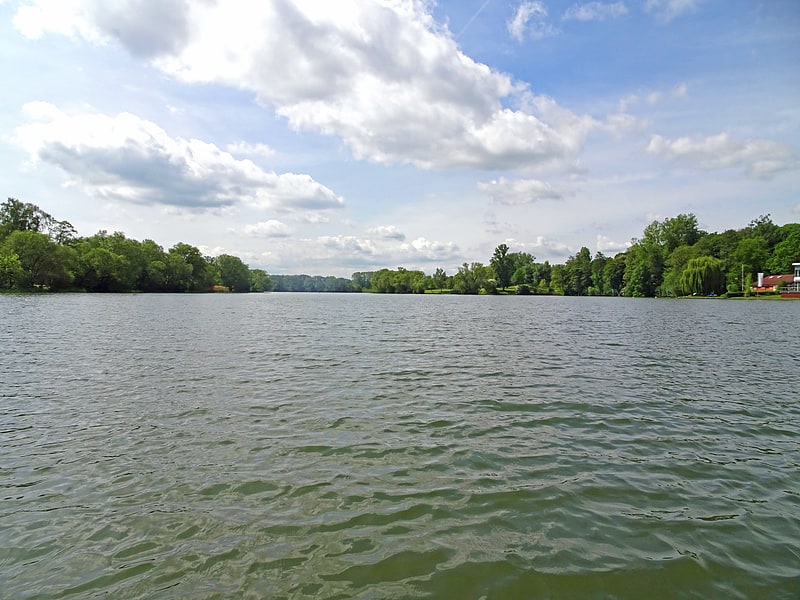
The Göttinger Kiessee is a dredged lake in the south of Göttingen. It originated from a gravel open pit mine and today serves together with its shore zones as a local recreation area. Until the end of the 19th century, this area was part of the floodplain of the nearby Leine River and consisted mainly of wet meadows. The northern part was on the territory of the city of Göttingen, the southeastern part on that of Geismar and the southwestern part on that of the municipality of Rosdorf. Since 1964, Geismar has been incorporated into Göttingen and after an exchange of territory in 2018, the lake is entirely on Göttingen territory. Gravel mining began in the north at the beginning of the 20th century. Today's sand road formed the access road at that time. In the 1950s, the lake still consisted of two separate parts. The clearly narrower middle of the water reminds us of this. For centuries, a connecting road from Geismar via Stegemühle to Rosdorf led across this point. On the Geismar side, a part of the paved route has been preserved. On the Rosdorf side, the connection was made via the street Am Ascherberg. At the beginning of the 1960s, the bridge between the two lakes was demolished and the entire area was turned into a recreational area.
Address: Rosdorfer Weg, 37083 Göttingen
Universitätsaula
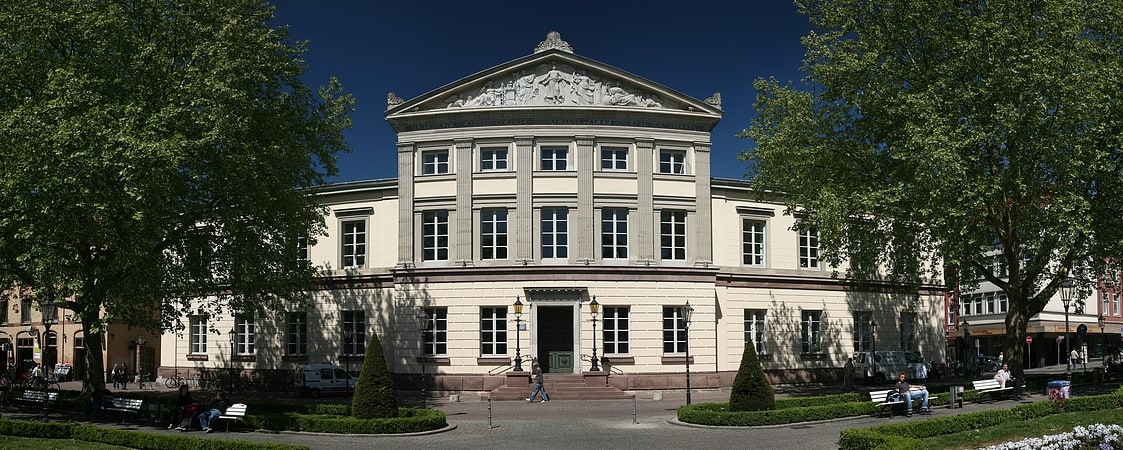
The Aula of the Georg August University was built to celebrate the first centennium of the University of Göttingen in 1837 as an assembly hall in the classicist style. It was commissioned by King William IV of Great Britain and Hanover as benefactor for the centenary celebration at the then Neuer Markt in Göttingen.
Address: 1 Wilhelmsplatz, Göttingen (Innenstadt)
Old Town Hall
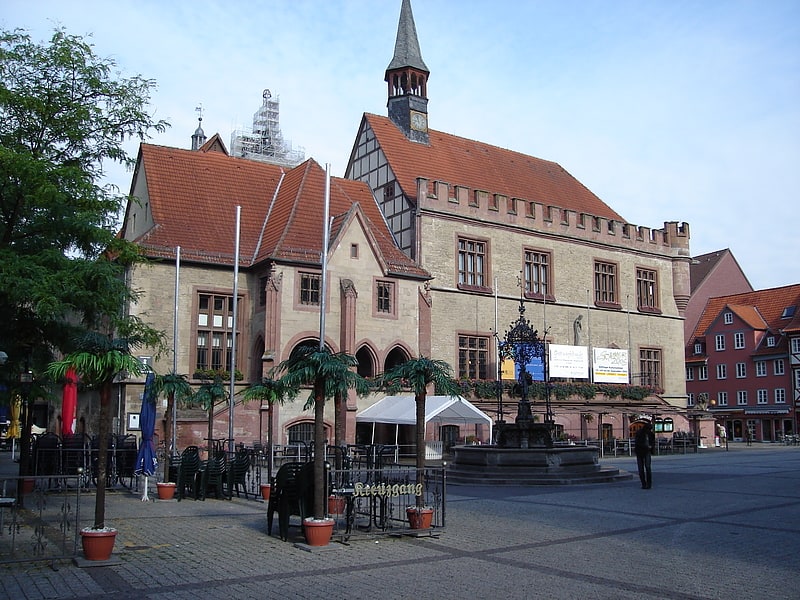
Also known as: Altes Rathaus
Architecture
Address: Markt 9, 37073 Goettingen (Innenstadt)